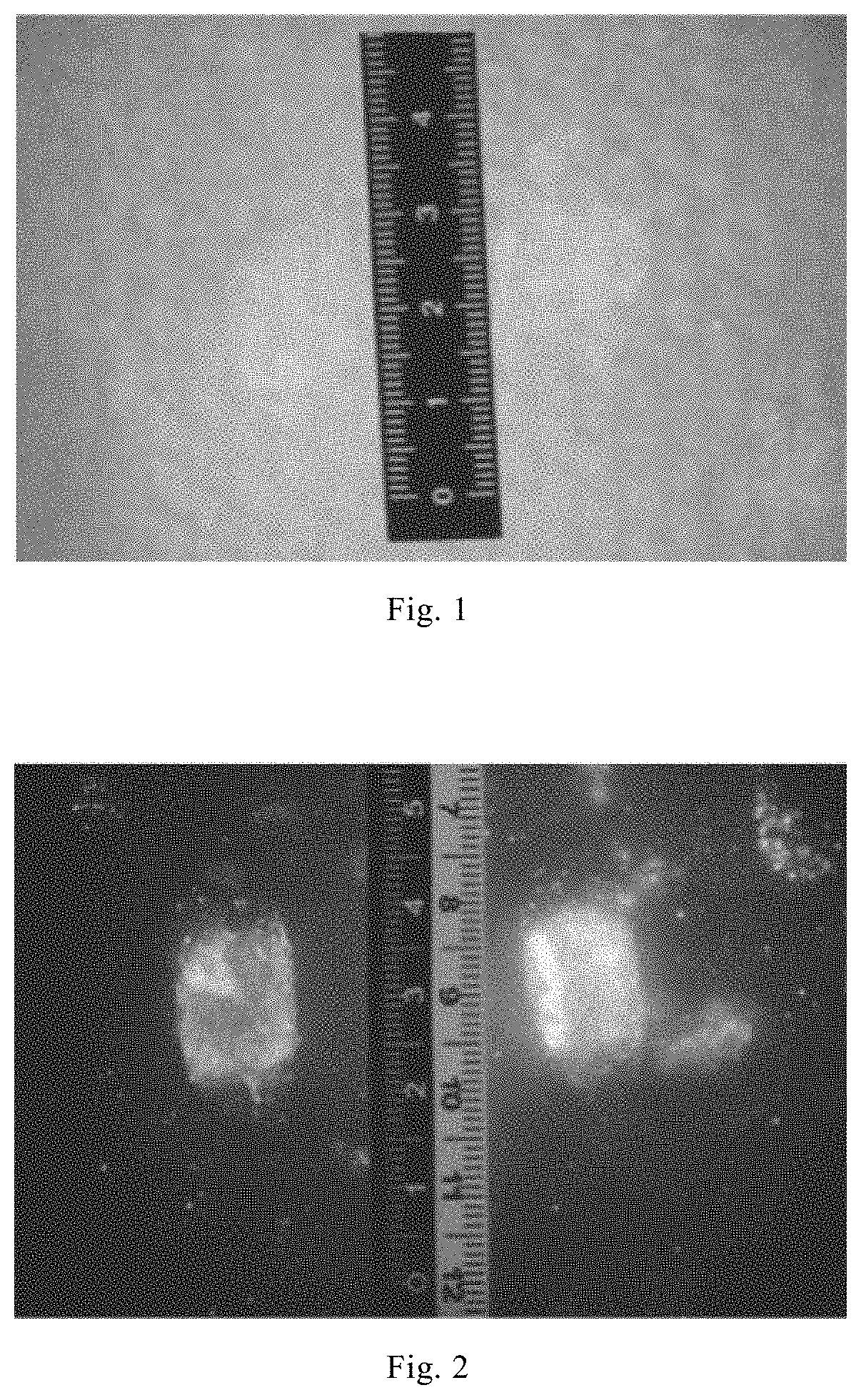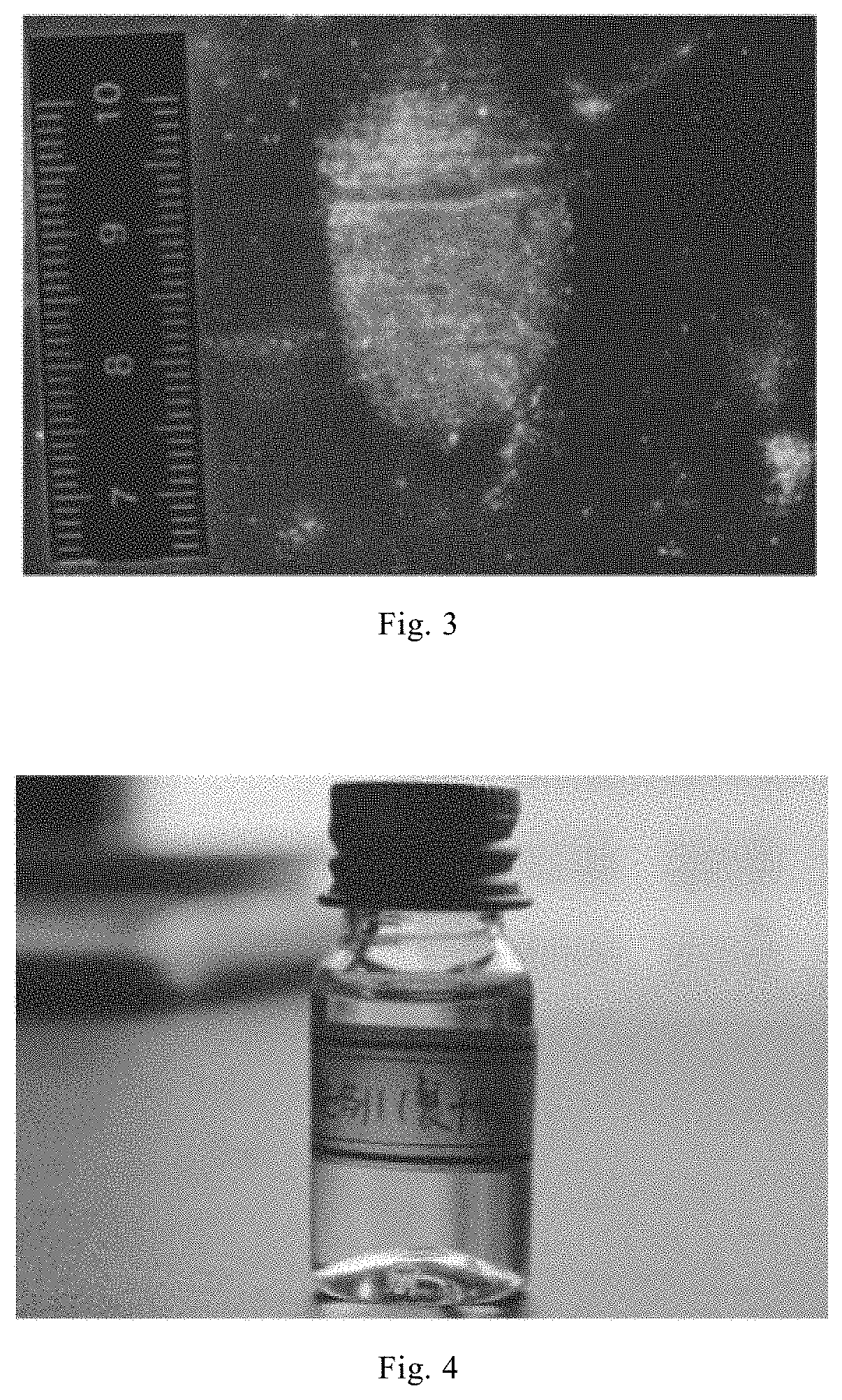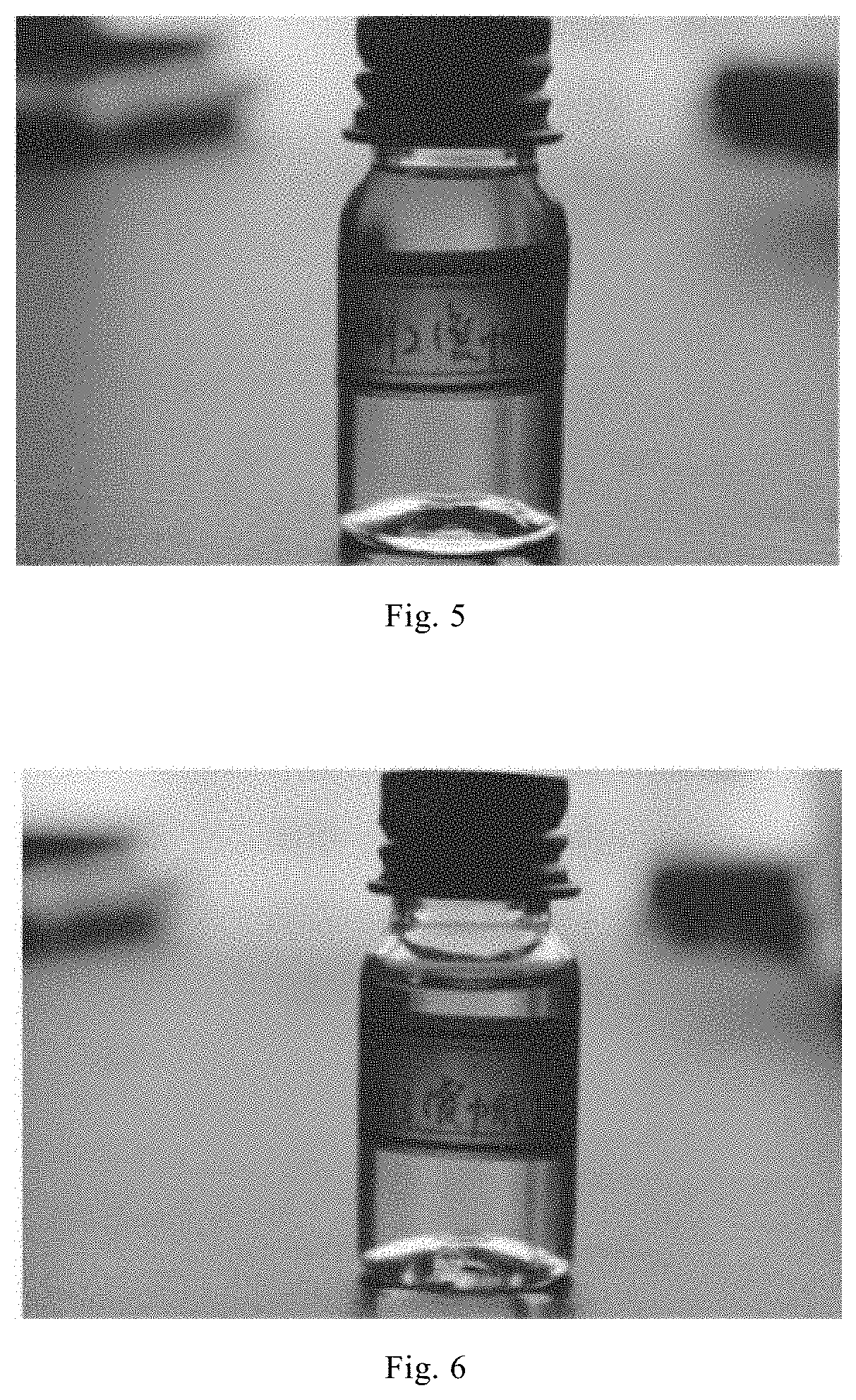Method for developing biological trace evidence on porous object
a porous object and trace evidence technology, applied in the field of criminal evidence reconnaissance, can solve the problems of unfavorable use, unfavorable detection of biological trace evidence, and inability to use,
- Summary
- Abstract
- Description
- Claims
- Application Information
AI Technical Summary
Benefits of technology
Problems solved by technology
Method used
Image
Examples
embodiment 1 (
the Sample is a Napkin with a Fingerprint)
[0067]This embodiment provides a method for developing a handprint on a porous object, and a formulation of a biological fluorescent development reagent used in this method was: indanedione 0.02 g; ethyl acetate 3 mL; glycerol 0.3 mL; pure alcohol 5 mL; petroleum ether 75 mL.
[0068]The developing method comprises the following steps:
(1) The moisture content of the napkin was controlled by drying to be less than 7%.
[0069](2) In an environment of 25° C. and a relative humidity of 60%, 0.3 mL glycerol was added into 5 mL pure alcohol, and the solution was thoroughly stirred and dissolved to prepare a solution 1; 0.02 g indanedione was sufficiently dissolved in 3 mL ethyl acetate to prepare a solution 2, and the mass concentration of indanedione was 0.0067 g / mL; the solution 1 and the solution 2 were mixed, then 75 mL petroleum ether was added, stirred and dissolved, and formulated into a biological fluorescent development reagent, and the biolog...
embodiment 2 (
the Sample is a Napkin with a Fingerprint)
[0071]This embodiment provides a method for developing a handprint on a porous object, and a formulation of a biological fluorescent development reagent used in this method was: indanedione 0.05 g; ethyl acetate 5 mL; glycerol 0.5 mL; pure alcohol 10 mL; petroleum ether 75 mL.
[0072]The developing method comprises the following steps:
(1) The moisture content of the napkin was controlled by drying to be less than 7%.
[0073](2) In an environment of 25° C. and a relative humidity of 60%, 0.5 mL glycerol was added into 10 mL pure alcohol, and the solution was thoroughly stirred and dissolved to prepare a solution 1; 0.05 g indanedione was sufficiently dissolved in 5 mL ethyl acetate to prepare a solution 2, and the mass concentration of indanedione was 0.01 g / mL; the solution 1 and the solution 2 were mixed, then 75 mL petroleum ether was added, stirred and dissolved, and formulated into a biological fluorescent development reagent, and the biolog...
embodiment 3 (
the Sample is a Napkin with a Fingerprint)
[0075]This embodiment provides a method for developing a handprint on a porous object, and a formulation of a biological fluorescent development reagent used in this method was: indanedione 0.10 g; ethyl acetate 8 mL; glycerol 0.8 mL; pure alcohol 15 mL; petroleum ether 75 mL.
[0076]The developing method comprises the following steps:
(1) The moisture content of the napkin was controlled by drying to be less than 7%.
[0077](2) In an environment of 25° C. and a relative humidity of 60%, 0.8 mL glycerol was added into 15 mL pure alcohol, and the solution was thoroughly stirred and dissolved to prepare a solution 1; 0.10 g indanedione was sufficiently dissolved in 8 mL ethyl acetate to prepare a solution 2, and the mass concentration of indanedione was 0.0125 g / mL; the solution 1 and the solution 2 were mixed, then 75 mL petroleum ether was added, stirred and dissolved, and formulated into a biological fluorescent development reagent, and the biol...
PUM
| Property | Measurement | Unit |
|---|---|---|
| temperature | aaaaa | aaaaa |
| illuminance | aaaaa | aaaaa |
| temperature | aaaaa | aaaaa |
Abstract
Description
Claims
Application Information
 Login to View More
Login to View More - R&D
- Intellectual Property
- Life Sciences
- Materials
- Tech Scout
- Unparalleled Data Quality
- Higher Quality Content
- 60% Fewer Hallucinations
Browse by: Latest US Patents, China's latest patents, Technical Efficacy Thesaurus, Application Domain, Technology Topic, Popular Technical Reports.
© 2025 PatSnap. All rights reserved.Legal|Privacy policy|Modern Slavery Act Transparency Statement|Sitemap|About US| Contact US: help@patsnap.com



